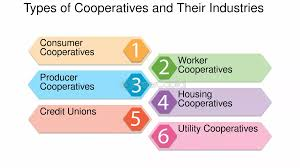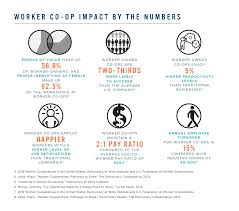Q.
Cooperatives
Cooperatives
Introduction
A cooperative is a business or organization that is owned and
operated by its members for their mutual benefit. Unlike traditional business
models that are driven by the need to maximize profits for external
shareholders, cooperatives are founded on the principle of democratic ownership
and collective decision-making. In a cooperative, the members — who may be
workers, consumers, producers, or residents — have an equal say in how the
organization is run and how the profits are distributed. The concept of cooperatives
is rooted in the idea that economic and social progress can be achieved when
individuals work together to meet their common needs, share resources, and pool
their strengths. Cooperatives exist in various sectors of the economy,
including agriculture, retail, finance, housing, and health care, and they play
a crucial role in promoting social and economic development, reducing
inequality, and fostering community resilience. The cooperative model is based
on values of self-help, self-responsibility, democracy, equality, equity, and
solidarity, and it is guided by internationally recognized principles that
emphasize member participation, autonomy, and concern for the community. The
history of cooperatives can be traced back to the early 19th century, with the
Rochdale Pioneers often credited as the founders of the modern cooperative
movement. Since then, cooperatives have evolved and expanded across the globe,
adapting to changing economic and social conditions while maintaining their
core values and principles. Today, cooperatives represent a powerful
alternative to traditional capitalist enterprises by empowering individuals and
communities, promoting inclusive economic growth, and ensuring that the
benefits of economic activity are more widely shared.
History and Evolution of Cooperatives
The origins of modern cooperatives can be traced back to the
early 19th century in response to the social and economic challenges brought
about by the Industrial Revolution. Rapid industrialization led to widespread poverty,
exploitation of workers, and inequality, prompting workers and communities to
seek alternative models of economic organization. The Rochdale Society of
Equitable Pioneers, established in Rochdale, England, in 1844, is widely
regarded as the first successful cooperative. The Rochdale Pioneers established
a set of guiding principles that have since become the foundation for modern
cooperatives. These principles include voluntary and open membership,
democratic control (one member, one vote), member economic participation,
autonomy and independence, education and training, cooperation among
cooperatives, and concern for the community. The Rochdale model quickly spread
to other parts of Europe and beyond, influencing the development of consumer
cooperatives, worker cooperatives, agricultural cooperatives, and credit
unions. In the late 19th and early 20th centuries, cooperatives gained momentum
as a response to the economic challenges faced by farmers, workers, and
consumers. In the United States, agricultural cooperatives were established to
help farmers access markets, secure fair prices, and reduce costs through
collective bargaining and shared resources. In Europe, worker cooperatives and
mutual aid societies emerged as a way for laborers to gain control over their
working conditions and incomes. The cooperative movement gained further
traction in the mid-20th century with the rise of social democratic
governments, which supported cooperative development through legislation,
financial support, and institutional backing. International organizations such
as the International Cooperative Alliance (ICA), founded in 1895, played a key
role in promoting the cooperative model, providing technical assistance, and
advocating for policies that support cooperative growth. The cooperative
movement also played a significant role in post-colonial development in Africa,
Asia, and Latin America, where cooperatives were seen as a means of promoting
economic self-sufficiency, reducing dependence on foreign aid, and fostering
local empowerment. In recent decades, cooperatives have adapted to the
challenges of globalization, technological change, and economic crises. The
financial crisis of 2008, in particular, highlighted the resilience of the
cooperative model, as cooperative banks and credit unions outperformed
traditional banks in terms of stability and member trust. Today, cooperatives
represent a diverse and dynamic sector of the global economy, encompassing a
wide range of industries and organizational forms while maintaining their core
commitment to democratic governance and member benefit.
Types of
Cooperatives
Cooperatives can be classified into several categories based on
their membership structure, purpose, and sector of operation:
1. Consumer
Cooperatives
Consumer cooperatives are owned and operated by the consumers
who use their goods and services. The primary goal of a consumer cooperative is
to provide high-quality goods and services at fair prices while returning
surplus profits to the members in the form of dividends or reduced prices.
Examples of consumer cooperatives include grocery stores, housing cooperatives,
and health care cooperatives. The members of a consumer cooperative have a
direct say in the management and policies of the organization, ensuring that
the cooperative operates in the best interests of its members rather than
external shareholders.
2. Worker Cooperatives
Worker cooperatives are owned and democratically controlled by
the employees who work for the organization. Each worker-member has an equal
vote in decision-making processes, and profits are distributed based on the
work contribution of each member. Worker cooperatives are particularly
effective in promoting job security, fair wages, and equitable working
conditions. Successful examples of worker cooperatives include the Mondragon
Corporation in Spain, which is one of the largest and most successful worker
cooperatives in the world, with thousands of employee-owners across various
industries.
3. Producer
Cooperatives
Producer cooperatives are formed by independent producers, such
as farmers, artisans, and manufacturers, who join together to collectively
market their products, purchase inputs, and access shared resources. Producer
cooperatives help members achieve economies of scale, reduce costs, and improve
market access. Agricultural cooperatives are among the most common types of
producer cooperatives, enabling farmers to pool their resources, negotiate
better prices, and improve production efficiency.
4. Financial
Cooperatives
Financial cooperatives, including credit unions and cooperative
banks, are owned and operated by their members, who are also the customers.
Financial cooperatives provide a wide range of financial services, including
savings accounts, loans, mortgages, and insurance, at favorable terms to their
members. The profits generated by financial cooperatives are typically
reinvested into the cooperative or distributed to members as dividends. Credit
unions, in particular, have gained prominence for their member-focused approach,
low fees, and competitive interest rates.
5. Housing
Cooperatives
Housing cooperatives are owned and managed by the residents who
live in the cooperative housing units. Members purchase a share in the
cooperative, which gives them the right to occupy a unit and participate in the
governance of the cooperative. Housing cooperatives provide an affordable and
stable housing option, as they are not subject to market speculation and
profit-driven rent increases. Residents work collectively to maintain the
property, make decisions about repairs and improvements, and establish community
rules.
6. Retail and
Wholesale Cooperatives
Retail and wholesale cooperatives are formed by independent
retailers and businesses that join together to benefit from collective
purchasing power, shared marketing, and operational support. By pooling
resources, retail and wholesale cooperatives can negotiate better prices from
suppliers, reduce operating costs, and improve customer service. Examples
include cooperative grocery stores, hardware stores, and pharmacies.
Principles and
Values of Cooperatives
Cooperatives operate according to a set of internationally
recognized principles established by the Rochdale Pioneers and refined by the
International Cooperative Alliance:
1.
Voluntary
and Open Membership – Membership in
a cooperative is open to all individuals willing to accept the responsibilities
of membership without discrimination.
2.
Democratic
Member Control – Each member
has one vote, regardless of the size of their investment or contribution.
3.
Member
Economic Participation –
Members contribute equitably to the capital of the cooperative and share in the
profits.
4.
Autonomy
and Independence –
Cooperatives are self-governing organizations controlled by their members.
5.
Education,
Training, and Information –
Cooperatives provide education and training for members and the public.
6.
Cooperation
Among Cooperatives – Cooperatives
work together to strengthen the movement.
7.
Concern
for Community – Cooperatives
work to improve the communities in which they operate.
Conclusion
Cooperatives represent a powerful and democratic alternative to traditional business models by prioritizing member benefit over profit maximization. Rooted in the principles of equality, democracy, and mutual aid, cooperatives empower individuals and communities, promote inclusive economic growth, and enhance social cohesion. Through their diverse forms and global reach, cooperatives continue to provide innovative solutions to economic and social challenges while remaining committed to their core values of fairness, participation, and solidarity.











0 comments:
Note: Only a member of this blog may post a comment.